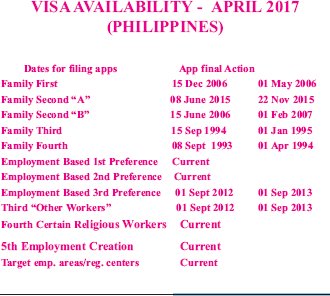
By: Robert Gard

I’m writing this at just 35 days into the Trump Administration with a caveat that things are changing (rarely for the better, in my opinion) so rapidly that points made in this article may be out-of-date, changed and supplanted with further information, or may simply no longer be the case by the time this article is published, and that this apparent chaos and misdirection is viewed by the new Administration as a “feature,” and not a “bug.”
I do have to give Trump credit for doing more to remove “writer’s block” than any U.S. chief executive in history. What’s been the talk of the immigration lawyer community over the past month has been the release and discussion concerning two February 17, 2017 Department of Homeland Security (DHS) Memos (implementing two 1/25/2017 Executive Orders) concerning border security and interior enforcement, as well as one unreleased “draft” memo calling for mobilization of up to 100,000 National Guard troops for use in immigration enforcement. Even as a draft, it’s frightening that the federal government is articulating the kind of extremism not witnessed in the United States since Operation Wetback in the 1950s.
Though long decried for its sheer cruelty, as a candidate Donald Trump praised it, claiming it was effective and popular. The Department of Homeland Security (DHS) quickly knocked down the imminent use of U.S. troops in immigration enforcement, though they weren’t helped at all by Trump’s careless characterization of recent immigration sweeps in cities across the nation as a “military operation,” an unfortunate choice of words which was described by White House Trump interpreter, Sean Spicer, as using those words as an adjective.
The memo draft is simply a plan by which DHS would implement President Trump’s border policing executive order issued January 25. Putting aside the National Guard, most of the memo’s other provisions can be categorized into two themes: more detention and less relief from removal. Among the more controversial portions of the memo are provisions that expressly revoke former President Obama’s “prosecutorial discretion” guidelines, and provisions that allow deportation of persons of any nationality to Canada or Mexico if they arrived in the U.S. by traveling through those contiguous countries. These are excerpts from outlines and analysis of some of the more notable provisions of the two February 17th DHS Memos, as prepared by the American Immigration Lawyers Association (AILA): SUMMARY AND ANALYSIS OF DHS MEMORANDUM “Implementing the President’s Border Security and Immigration Enforcement Improvements Policies”
INTRODUCTION: On February 17, 2017, DHS Secretary John Kelly issued a memorandum, “Implementing the President’s Border Security and Immigration Enforcement Improvements Policies” (Memorandum). The Memorandum outlines an implementation plan for President Trump’s January 25, 2017 Executive Order, “Border Security and Immigration Enforcement Improvements.” The Memorandum states that it is intended to serve as “guidance to all Department personnel, and supersede all existing conflicting policy, directives, memoranda, and other guidance regarding this subject matter, except as otherwise expressly stated.”
A. POLICIES REGARDING THE APPREHENSION AND DETENTION OF ALIENS DESCRIBED IN SECTION 235 OF THE IMMIGRATION AND NATIONALITY ACT
The Memorandum calls for a massive expansion in detention by requiring DHS to detain nearly everyone it apprehends including those with no criminal convictions, until they:
• are removed from the United States;
• are required to be released by statute or because of a binding settlement agreement or judicial order;
• become a U.S. citizen or hold other valid immigration status;
• are around found to have a credible fear of persecution by an asylum officer or IJ and agree to comply with any conditions imposed by ICE upon release; or
• are paroled into the United States.
B. HIRING MORE CBP AGENTS/OFFICERS
The Memorandum calls for the immediate hiring of 5,000 additional border patrol agents and 500 Air and Marine Agents/Officers to “ensure operational control of the border.”
C. HIRING ADDITIONAL ICE OFFICERS AND AGENTS
The Memorandum instructs the Director of ICE to take steps to expeditiously hire 10,000 ICE agents and officers “as well as additional operational and mission support and legal staff necessary to hire and support their activities.”
D. ENHANCING ASYLUM REFERRALS AND CREDIBLE FEAR DETERMINATIONS PURSUANT TO SECTION 235(b)(1) OF THE INA
The Memorandum explains the current law and policy regarding credible fear determinations. Though it does not expressly change the standard for establishing credible fear it clearly anticipates that procedures and standards for establishing credible fear will be made more restrictive. The Memorandum also asserts that fraud is rampant in the credible fear process and increases resources for detecting and preventing fraud in the asylum and benefits adjudication processes.
E. PROPER USE OF PAROLE AUTHORITY PURSUANT TO SECTION 212(D)(5) OF THE INA
The heads of USCIS, CBP and ICE are directed to ensure that, until final regulations are issued clarifying the appropriate use of parole power, written policy guidance and training is given to employees of each agency to exercise parole authority as instructed under INA §212(d)(5) only on a case by case basis. The ICE policy directive on parole for certain arriving aliens with a positive credible fear determination remains valid. Under the ICE directive, ICE has the discretion to grant parole once the individual establishes a credible fear as long as the individual demonstrates that he or she would not a pose a danger to the community and is not a flight risk. The Memorandum states that the practice of granting parole to “pre-designated categories” has contributed to a “border security crisis, undermined the integrity of immigration laws and the parole process, and created an incentive for illegal immigration.” Analysis:
• Section K and Section A of the Memorandum (requiring nearly all grants of parole for those apprehended to be approved by the Deputy Director of ICE or the Deputy Commissioner of CBP) demonstrate an intention to all but eliminate the practice of parole in the most limited circumstances. This has caused concern that persons applying for adjustment of status to permanent resident status who have been, in recent years, granted advance parole on a routine basis, allowing them to travel abroad and return while their I-485 applications are pending at USCIS, will now have to establish compelling humanitarian needs to travel before SCIS will issue a grant of advance parole. This would be a significant change in current procedures and a possible insurmountable burden to green card applicants.
• The Memorandum is highly critical of the current parole policies particularly the exercise of parole based on “pre-designated categories” and indicates that parole programs protecting vulnerable individuals will likely be restricted or terminated.
• Under the current military parole in place program, DHS exercises discretion to grant parole to the spouse, child, or parent of an activeduty member or member who previously served in the U.S. military. Other parole programs protect family members of Haitian, Cuban, and Filipino nationality.
F. PRIORITIZING CRIMINAL PROSECUTIONS FOR IMMIGRATION OFFENSES COMMITTED AT THE BORDER
Directors of Joint Task Forces, and ICE-led Border Enforcement Security Task Forces (BESTs) are directed to implement counter network operations directed at disrupting transnational criminal organizations, especially those involved in human smuggling. The Task Forces should include people from other federal, state, and local agencies, and should target people and organizations whose criminal conduct undermines border security or the integrity of the immigration system, specifically offenses related to:
• Smuggling or trafficking
• Drug trafficking
• Illegal entry or reentry
• Visa fraud
• Identity theft
• Unlawful possession or use of official documents
• Acts of violence against persons or property at or near the borders
SUMMARY AND ANALYSIS OF DHS MEMORANDUM
“Enforcement of the Immigration Laws to Serve the National Interest” On Wednesday January 25, 2017, President Trump signed an executive order, “Enhancing Public Safety in the Interior of the United States,” announcing a massive expansion in interior immigration enforcement. On February 17, 2017, DHS Secretary John Kelly issued a memorandum outlining an implementation plan for that Executive Order titled “Enforcement of the Immigration Laws to Serve the National Interest”1 (Memorandum). 1 The Memorandum does not address a number of the directives contained in the Executive Order, in particular those that require DHS to collaborate with other individuals and cabinet level departments. These include the provisions relating to funding for and actions against sanctuary jurisdictions (Section 9); resources for prosecution of immigration- related crimes (Section 11); sanctions against recalcitrant countries (Section 12) and portions of the “Reporting” and “Transparency” sections (Sections 15 and 16).
The Memorandum leads with notice that all “existing conflicting directives, memoranda, or field guidance” regarding immigration enforcement and priorities for removal are immediately rescinded, and names specifically the November 20, 2014 DHS memoranda “Policies for the Apprehension, Detention and Removal of undocumented Immigrants” and “Secure Communities.” The Memorandum also states that the June 15, 2012 DACA memorandum and the November 20, 2014 DACA+/DAPA memorandum are NOT rescinded.
It is unclear if the Memorandum rescinds prior memoranda that prohibited enforcement actions at sensitive locations (like schools and churches) and protected victims or witnesses of crimes and other vulnerable populations like primary caregivers of children, individuals with serious mental disabilities, and pregnant and nursing mothers.
 VIA Times – March 2017 Issue Vital News, Vibrant VIews for Asian Americans in Chicago & Midwest
VIA Times – March 2017 Issue Vital News, Vibrant VIews for Asian Americans in Chicago & Midwest

